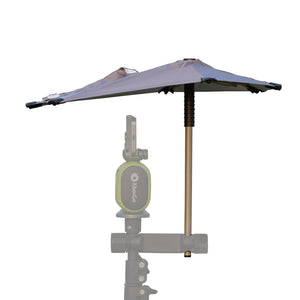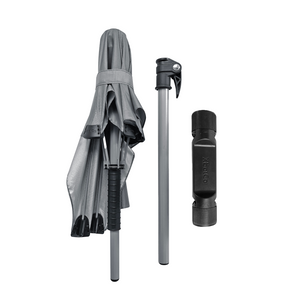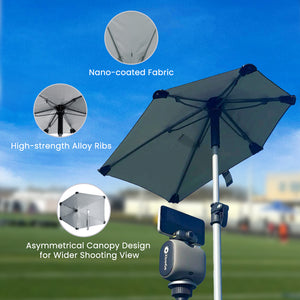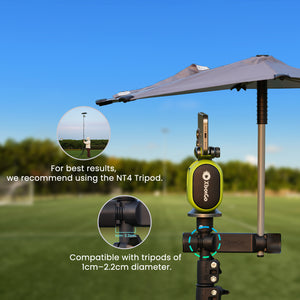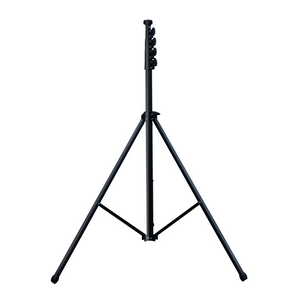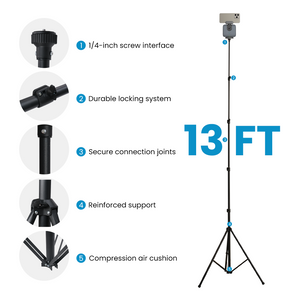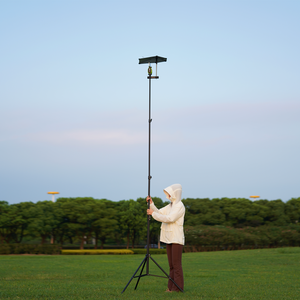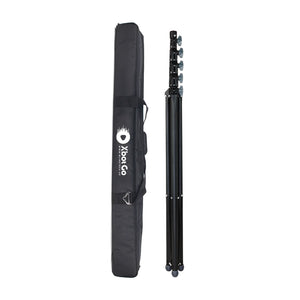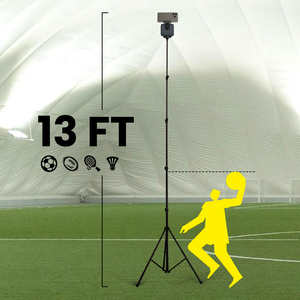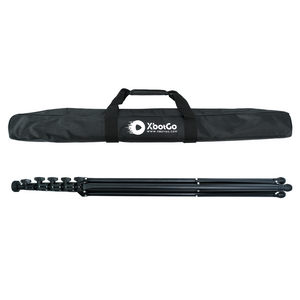XbotGo Chameleon AI Sports Camera
How Big is a Football Field? The Complete Guide
Picture this: you're watching the big game when someone says the new stadium is "about three football fields wide." You nod knowingly, but then wonder—how big is a football field, exactly? If you've ever been confused about football field dimensions or mixed up American football with soccer fields, you're not alone. Let's clear up the confusion once and for all.
The Quick Answer: Football Field Dimensions
An American football field measures 120 yards long (360 feet) and 53⅓ yards wide (160 feet). That's a total area of 57,600 square feet—or about 1.32 acres. But here's what might surprise you: only 100 yards of that length is the actual playing field. The remaining 20 yards? Those are the two end zones, each 10 yards deep.
To put this in perspective, if you laid 980 hamburgers side by side, they'd stretch the width of a football field. Or imagine parking 20 school buses end-to-end—that's roughly the length from goal line to goal line.

XbotGo Chameleon AI Sports Cameraman
Capture every moment with AI-powered tracking. Perfect for parents, coaches, athletes, and creators who want seamless footage without manual filming.
Breaking Down the Field Components
The Playing Field
The main playing area stretches exactly 100 yards between the goal lines. This is where most of the action happens, marked by white lines every 5 yards and numbers every 10 yards. Those yard markers aren't just for show—they're essential for tracking progress in a game built around advancing the ball specific distances.
End Zones: The Touchdown Territory
Each end zone extends 10 yards beyond the goal line, creating scoring areas at both ends of the field. These zones are where touchdowns happen and where some of the most exciting plays unfold. The back of each end zone is marked by the end line, which represents the absolute boundary of the playing field.
Goal Posts: Reaching for the Sky
Standing tall at the back of each end zone, goal posts rise 30 feet high with crossbars positioned 10 feet above the ground. The posts are 18½ feet apart—a measurement that hasn't changed since the early days of football. These bright yellow structures (required in the NFL) serve as targets for field goals and extra points.
Hash Marks: The Hidden Strategic Element
Here's where things get interesting. Hash marks—those short lines running down the center of the field—vary significantly between levels of play:
- High school: 53 feet, 4 inches apart
- College: 40 feet apart
- NFL: 18 feet, 6 inches apart
This might seem like a minor detail, but it dramatically affects gameplay strategy. Wider hash marks in high school create more challenging angles for plays, while the NFL's narrow spacing opens up the field for more dynamic offensive options.
The Fascinating Story Behind 160 Feet
Ever wonder why a football field is exactly 160 feet wide? It's not random. In 1880, Yale University successfully lobbied to reduce the number of players per team from 15 to 11. The following year, they proportionally reduced the field dimensions by about 25%—from 210 feet to 160 feet wide. This width has remained unchanged for over 140 years.
Interestingly, Harvard noted that these new dimensions would fit perfectly within their running track at Jarvis Field, suggesting that stadium infrastructure played a role in standardizing field sizes. This practical consideration helped cement the 160-foot width as the standard we know today.
American Football vs. Soccer: Clearing the Confusion
One of the biggest sources of confusion comes from comparing American football fields with soccer pitches. Here's the key difference:
American football fields are standardized—every field from high school to the NFL uses the same dimensions.
Soccer fields vary significantly. FIFA allows pitches between 100-130 yards long and 50-100 yards wide. Most professional soccer fields are approximately 115 yards by 74 yards—noticeably wider than American football fields.
When stadiums host both sports, you can see the dramatic difference. Soccer goals typically sit at the back of football end zones, and the soccer sidelines extend well beyond the football boundaries. It's this width difference that makes soccer fields feel so much more spacious.
Dimensions Across Different Levels
While the basic field dimensions remain constant, several elements change between high school, college, and professional football:
High School Football
- Standard 120 × 53⅓ yard field
- Hash marks 53 feet, 4 inches apart
- Goal posts may vary in height and width
- Some fields share space with running tracks
College Football
- Same field dimensions as high school
- Hash marks narrow to 40 feet apart
- Standardized goal post dimensions
- Many stadiums seat 100,000+ fans
NFL Football
- Identical field size to other levels
- Hash marks only 18 feet, 6 inches apart
- Strict goal post specifications
- Mandatory field maintenance standards
Football Fields Around the World
Think American football fields are big? Wait until you hear about Canadian football:
- Length: 150 yards (110 yards of play plus 20-yard end zones)
- Width: 65 yards
- Total area: 87,750 square feet
That's over 30,000 square feet larger than an American field! The extra space accommodates 12 players per side and creates a more wide-open style of play.
Australian Rules Football takes it even further with oval-shaped fields that can be up to 200 yards long and 170 yards wide—now that's massive!
Visualizing Football Field Size
To truly grasp how big a football field is, consider these comparisons:
- In acres: 1.32 acres (without end zones, it's exactly 1 acre)
- In city blocks: Approximately one New York City block
- In parking spaces: About 270 standard parking spots
- In basketball courts: Nearly 14 NBA courts
For those working in sports technology, understanding these precise dimensions is crucial. Modern AI camera systems like the XbotGo Chameleon must calibrate to these exact measurements to track players accurately across the entire field. The system's ability to recognize jersey numbers and follow specific players relies on understanding where they are within the field's standardized dimensions.
Why Americans Use Football Fields as Measurements
You've probably heard comparisons like "the fire spread across 80 football fields an hour" or "the building is two football fields long." Americans use football fields as a unit of measurement because nearly everyone has a spatial memory of them. Most high schools have football fields, and students spend countless hours there for sports, PE classes, or events.
This shared visual reference makes abstract measurements tangible. When someone says "three football fields," you can immediately picture that distance—something that's harder to do with "360 yards" or "329 meters."
The Future of Football Fields
While field dimensions haven't changed in over a century, how we use and understand these spaces continues to evolve. Modern technology brings new perspectives to these traditional measurements. AI-powered cameras can now track every player's movement across all 57,600 square feet, creating data visualizations that would have been impossible just a decade ago.
Smart field maintenance systems use GPS-guided equipment calibrated to exact field dimensions, ensuring perfect line marking every time. Even broadcast technology relies on precise field measurements, with virtual first-down lines and augmented reality graphics requiring exact calibration to field dimensions.
Conclusion
So there you have it—a football field is exactly 120 yards long by 53⅓ yards wide, covering 1.32 acres of precisely measured terrain. But it's more than just numbers. These dimensions represent over a century of tradition, strategic evolution, and shared cultural understanding.
Whether you're a casual fan trying to understand game commentary, a coach planning strategies around hash mark positions, or someone in sports technology working with field specifications, understanding these dimensions helps you appreciate the game at a deeper level.
Next time someone uses a football field as a measurement, you'll know exactly what they mean. And if anyone tries to tell you a football field is "about a kilometer," you can set them straight—it's actually 109.7 meters, thank you very much!
Remember, every element of a football field, from its 160-foot width born from Yale's player reduction to the varying hash marks that change game strategy, has a purpose and a story. That's what makes the simple question "how big is a football field?" so surprisingly rich with answers.
XbotGo Chameleon AI Sports Camera
Capture every moment with AI-powered tracking. Perfect for coaches, parents, and athletes who want seamless footage without manual filming.







 Soccer
Soccer Basketball
Basketball Ice Hockey
Ice Hockey Rugby
Rugby









